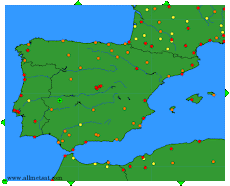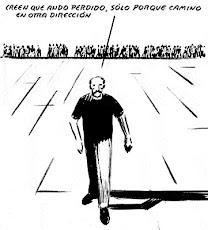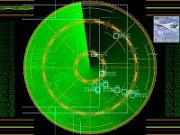sábado, 29 de septiembre de 2012
LA PERVERSIÓN DEL TERCER Y CUARTO PODER ( Y 2)
Hoy, el accidente del 20 de agosto de 2008 del vuelo JK5022, volvería a suceder y tendría las mismas consecuencias; y el sistema judicial lo sabe y mira para otro lado. Lo sabe y todavía tiene la desvergüenza de proclamar que no hay responsables; perdón, que no hay responsables vivos; porque el reciente archivo de la causa penal por parte de la Audiencia Provincial de Madrid equivale a reconocer que los culpables, si los hubiera, no están vivos. Y si hay algún responsable o responsables esos son los pilotos Antonio García Luna y Francisco Mulet, que estaban al mando del vuelo JK5022 aquel 20 de agosto de 2008.
El auto no indica que quizá sean culpables de volar una y mil veces en un aeropuerto cuya operación es insegura. Así es, las operaciones segregadas y simultáneas a pistas cruzadas son inseguras, ilegales y exclusivas del Aeropuerto Internacional de Madrid-Barajas.
El auto no indica que quizá sean culpables de volar una y mil veces en una compañía de la que no se sabe las inspecciones que ha pasado, aunque seguramente ninguna de ellas realizada por inspectores del Estado, sino por los así llamados técnicos expertos, que no sabemos si serán técnicos y/o expertos, pero seguro que no son inspectores. Recordamos a Javier “Eliot Ness” Aguado del Moral, que sí era Inspector del Estado aunque sus propios jefes lo sancionaban por cumplir con su trabajo y realizar inspecciones.
El auto no indica que quizá sean culpables de dejarse presionar bajo la amenaza del despido si retrasaban o no volaban un avión si detectaban algún fallo de seguridad. Quizá sean culpables por actuar como si eso de los accidentes les pasase a otros. Recordamos a Michel Gordillo, despedido por anteponer la seguridad a volar de cualquier manera.
No desplegar flaps y slats es un fallo humano equiparable a no desplegar el tren de aterrizaje, y para eso hay diseñadas medidas de seguridad que eviten un accidente mortal cuando eso sucede y el avión vuelve al suelo incapaz de remontar el vuelo. Deberíamos añadir en cualquier aeropuerto excepto en el Aeropuerto Internacional de Madrid-Barajas.
Sobreseer, archivar o enterrar la causa penal equivale a reconocer que los culpables de un diseño y una operación inseguras no son responsables del accidente. Es decir, que la existencia del barranco del Arroyo de la Vega por el que se despeñó el vuelo JK5022 y por el que se despeñaría cualquier otro no es obra de nadie sino de la fatalidad. Según usted, el incorrecto diseño de las pistas del Aeropuerto Internacional de Madrid-Barajas no es culpa de nadie. Y esto, estimado juez, no es verdad.
Lo último que hicieron Antonio García Luna y Francisco Mulet antes de fallecer fue romperse los brazos en un desesperado intento de volar el avión, de controlar el avión, de evitar el accidente. De no existir el barranco del Arroyo de la Vega, hoy tendrían unas cicatrices en su cuerpo, pero estarían vivos.
Según usted, señor juez las operaciones segregadas y simultáneas en pistas cruzadas,
que en muchos momentos obliga a los aviones a despegar con el viento de cola, no es culpa de nadie. Nadie es responsable de una operación ilegal, insegura y exclusiva del Aeropuerto Internacional de Madrid-Barajas.
Señor Juez, los culpables son aquellos que han diseñado un aeropuerto inseguro, han implantado una operación insegura, han desmantelado el servicio de inspección; y las compañías aéreas son, en muchos casos, cómplices.
Señor juez, los pilotos, controladores, técnicos de mantenimiento, inspectores del Estado, trabajadores en plataforma, etc., no son culpables sino cautivos de un sistema siniestro.
Adjuntamos los siguientes artículos y notas de prensa, de los que recomendamos su lectura, sobre el fallo (y nunca mejor dicho) judicial de la Audiencia Provincial.
La Audiencia Provincial se come el queso de Reason
El Colegio de Pilotos considera que la investigación judicial del accidente de Spanair es un nuevo fracaso para la seguridad aérea
Nota de prensa de la Asociación de Afectados del Vuelo JK5022
Yo acuso
viernes, 21 de septiembre de 2012
LA PERVERSIÓN DEL TERCER Y CUARTO PODER (1)
Estas dos últimas semanas hemos presenciado la perversión del tercer poder, el judicial, y el cuarto poder, como se conoce a los medios de comunicación.
Por un lado la publicación de las grabaciones de las conversaciones de los ocupantes de la cabina del vuelo JK5022 por parte de la cadena SER, y por otro el archivo de la causa penal por parte de la Audiencia Provincial de Madrid.
Considerábamos a la cadena SER un medio de información serio. Entendiendo por medios serios aquellos que saben distinguir y distinguen entre opinión e información; sus profesionales tienen la suficiente sangre fría para relatar hechos, por duros que éstos sean, estar allí donde la noticia tiene lugar y al mismo tiempo mostrar una empatía capaz de transmitir la humanidad o inhumanidad de los hechos; que actúan con la ética y estética responsable de sacar a la luz verdades, aún a riesgo de enfrentarse al poder establecido, con el fin de que la sociedad conozca lo que por intereses espúrios se le oculta; pero que respetan el dolor que puede producir una palabra o imagen; y tienen el don de la oportunidad y conveniencia a la hora de hacer públicas determinadas informaciones y noticias. Si además a través del humor son capaces de condensar en un dibujo lo que ni un millón de palabras o mil imágenes transmiten, entonces son geniales. Todo esto entre otras cosas; pero principalmente esto.
La cadena Ser, junto con otros muchos medios que no vamos a enumerar, y entre los que se encontraban y ya no están la televisión y radio públicas españolas, no son, o eran, como aquellos que nos invaden por tierra, mar y aire, o más exactamente por prensa escrita, TV y radio, confundiendo al lector, vidente u oyente con opinión e información sin distinción entre ambas. Con profesionales, por llamarlos de alguna forma, que se prestan a un juego que nada tiene que ver con la ética profesional del periodismo. Además, mezclan sin venir a cuenta el dolor con el humor, la tragedia con la comedia, pariendo una mescolanza de chabacanería y mal gusto muy ofensivo para el que se encuentra en el lado de la noticia.
Cuando el día 13 de septiembre pasado muy temprano por la mañana, escuchamos a la excelente periodista Pepa Bueno dar la lamentable noticia de la filtración del contenido íntegro de las conversaciones que tuvieron lugar en la cabina, se nos revolvieron las entrañas. Desconocemos si la señora Bueno sabía lo que tenía entre manos, o si consideraba los hechos una noticia del montón y lo que radiaron una conversación entre dos colegas sin más. Parece que el cóctel formado por un caso judicial, una conversación supuestamente sujeta al secreto profesional, un accidente sin esclarecer y con muchas víctimas, nubló su mente y cayó en el más lamentable de los errores que pudo cometer la periodista, echar sal en la herida abierta de 18 supervivientes y los familiares de 154 víctimas mortales. Y lo peor de todo es que la grabación no aporta nada al público, más que satisfacer un morbo indecente y una curiosidad malsana.
Las conversaciones, que publicaron íntegras en su página web, comienzan con la conversación entre la tripulación y los mecánicos antes del siniestro y finaliza con las últimas palabras del comandante en el que desesperadamente suplica al copiloto que haga volar el avión.
Reconocemos que hemos escuchado fragmentos de la grabación, pero nos hemos negado a profanar la intimidad y el dolor de los 18 supervivientes y los familiares de las 154 víctimas.
Tanto el sindicato de pilotos SEPLA, de controladores USCA, su Asociación profesional (APROCTA), la Asociación Sindical de los Técnicos de Manteniento de Aeronaves (ASETMA) y el Colegio Oficial de Pilotos de Aviación Comercial (COPAC), han condenado enérgicamente las filtraciones Adjuntamos las notas de prensa del SEPLA, ASETMA, USCA, APROCTA y COPAC.
Todos coinciden en la falta de ética profesional del medio por la publicación, prohibida por la Ley de Seguridad Aérea española, la normativa internacional de investigación de accidentes aéreos, recogida en el Convenio de Chicago y en la regulación europea, solicitan la inmediata retirada de las grabaciones y expresan su solidaridad, apoyo y respeto por las víctimas y sus familiares.
Y como recuerda el COPAC “la grabación de las conversaciones de cabina supone una cesión voluntaria del derecho a la intimidad por parte de los pilotos con la única finalidad de recopilar información que permita evitar futuros accidentes y mejorar la seguridad aérea y en ningún caso se debe utilizar para otro tipo de fines.”
Adjuntamos también los artículos publicados en Aviación Digital De nuevo se ha violado en España un "confesionario" llamado cockpit, y Periodismo y principios éticos de Carlos Castañosa en el Rincón del Bonzo.
lunes, 10 de septiembre de 2012
REJECTED TAKE OFF: THE OPERATION THE JK5022 FLIGHT COULD NOT PERFORM
Far off in our collective memory remains the image of the Sunbreeze attempting to take off from runway 36L on august 20th, 2008, at Madrid-Barajas International Airport, a 7.000 billion euro investment meant to be the emblem of the new and vigorous Spain.
Unfortunately for 154 people, crew and passengers, and their families, 2008 was not only the year of the beginning of the hugest crisis the Spanish society has ever faced, but also the year that showed that playing dice with air safety has disastrous consequences. This accident was the direct result of a wrong airport design and unsafe operation, born from the insanity and criminal minds of the AENA and the Civil Aviation Department engineers.
Would have been able the Sunbreeze flight crew to reject the take off after reaching V1 speed and being aware that the aircraft would not fly?
If so the response is clear: the aircraft was doomed from the very moment 36L Runway Protection Zone does not exist; instead the aircraft found a cliff and the Arroyo de la Vega river bed.
The following SKYbrary article deserves a throughout reading for those who still believe the JK5022 accident was but the consequence of misfortune or a procedure flaw. Accident and Incident Reports section shows that it would have been possible for the Sunbreeze flight crew to successfully reject the take off at any other airport but Madrid-Barajas.
Rejected Take Off
Source: www.skybrary.aero
Categories: Overrun on Take Off | Directional Control | Runway Excursion | Operational Issues
Definition
The situation in which it is decided to abort the take off of an aircraft.
The GO/NO GO Decision
In the event of an engine malfunction, the recognition of a significant abnormality, or an ATC instruction to stop the aircraft during the take off roll, transport aircraft in Performance Category ‘A’ should be able to safely reject the take off if the decision to do so is made at a speed not greater than the calculated decision speed (V1).
A successful reject/abort will be achieved if the response is prompt and is done from memory in accordance with prescribed procedures (SOPs). After V1, a reject should only be considered if there is a strong reason to believe that the aircraft will not fly.
Continuing the Take Off after V1
Once V1 has been exceeded, the takeoff must be continued. If the performance calculations were done correctly, it will be possible to get safely airborne and climb away in the case of a single engine malfunction or failure provided that the associated crew actions are correct and comply with specified procedures. Once the immediate actions to secure the emergency have been taken, the crew will have time to decide if an immediate landing, a diversion or continuation of the flight is the most appropriate course of action.
"Low Speed/High Speed" RTO
While a successful reject at V1 is achievable, it is universally recognized that the closer the speed gets to V1, the greater the risk involved with the rejected takeoff. To that end, most manufacturers recommend an airspeed which defines the transition between the “low speed” and the “high speed” regime of the takeoff roll. In the “low speed” regime, it is recommended that the takeoff be rejected for any malfunction. Once in the “high speed” regime, the recommendation is that the takeoff only be rejected for major malfunctions such as an engine failure or fire.
Many modern, more sophisticated aircraft actually inhibit non critical warnings during the high speed portion of the takeoff roll and the initial climb. SOPs are often written to include a speed callout in the 80 to 100 knot regime. This callout serves as an instrument crosscheck point, a pilot incapacitation check and as the transition between the low and high speed segments of the takeoff roll.
Tyre Failure on the Take Off Roll
Tyre failure during the takeoff roll deserves additional consideration and is often the cause of an inappropriate reject decision. Failure of a tyre will result in a longer than calculated stopping distance due to the loss of braking force on the associated wheel. Airbus recommends that, for a single tyre failure with no evidence of collateral damage, the takeoff be continued if the speed is greater than V1 minus 20 knots.
Rejected Takeoffs and Runway Excursions
The main reasons why runway excursions occur during rejected take offs can be categorised as:
- the decision to reject the take off is made after V1 and there is insufficient runway length left to come to a stop on it.
- the flight crew actions required to achieve a rejected take off are not carried out in a sufficiently prompt and/or comprehensive manner.
- stopping devices are not used to their full capacity.
- directional control is not maintained during the take off roll.
- it is found at Vr that it is impossible to achieve rotation.
Solutions
Runway Excursions arising from Rejected take offs can therefore usually be avoided if Operating Procedures for the loading and take off of aircraft are robust and rigorously applied.
The V1 callout must be made in such a fashion that the verbalization is complete as the speed is achieved. Stopping action must be initiated promptly (within 2 seconds) of the reject decision. Stopping devices must be used to their full capability until such time that it is certain that the aircraft will stop before the end of the runway. Unless there is a clear indication that the aircraft will not fly, a reject must not be initiated after V1.
However, for large aircraft, there is usually a significant gap between V1 and Vr so that if, at Vr, it is found impossible to physically achieve rotation, there may be no alternative but to reject the take off. It is this scenario, on limiting runway lengths, which accounts for many of the most serious runway excursions arising from rejected take offs. Often, the problem with rotation is attributed to aircraft total weight or Centre of Gravity being different to that understood by the flight crew, due to differences in the distribution or weight of the actual load and that indicated on the certified load and trim sheet. A similar circumstance may result from take off using incorrect aircraft performance calculations or ASI speed bug settings, although a viable flight crew emergency response to these cases may be available by means of a prompt increase to maximum available thrust/power.
Aircraft Loading procedures must be properly specified, and there must be checks that the aircraft has been loaded in accordance with the documentation supplied to the flight crew. Particular care in is required where the provision of this service is by a contractor and especially so where such a contractor supplies equivalent services to other operators using the same staff, since the contractual requirements of all operators may not be the same. Where flight crews use electronic flight bags (EFBs) to calculate take off performance, special attention should be given to the applied SOP and to crew training to ensure that both crew fully understand EFB use.
Application of SOPs
All the relevant Flight Crew SOPs must be clearly specified and applied, particularly:
- Cross checking take off performance calculations and the corresponding setting of ASI speed bugs.
- Both flight crew must be fully satisfied that the prevailing runway surface conditions correspond to the assumptions which have been made in their take off performance calculations.
- There must be unambiguous requirements governing crew calls of abnormal conditions during the take off roll and the degree to which the aircraft commander then has the discretion to reject or continue the take off.
- There must be accurate calls of standard speeds during the take off by PNF and a check that both principal ASIs are indicating the same figure at the designated check speed (usually 80 KIAS or 100 KIAS).
Simulator Training
Once robust flight crew SOPs are in place, the most effective way for an Operator to ensure that flight crew are likely to respond to a rejected take off decision and its execution in the expected way is practice. This means ensuring that the specifications for both initial and recurrent, aircraft type simulator training and assessment include sufficient time for the inclusion of un-expected events, which will invite both stop-go take off decisions and actual rejected take offs. Unexpected events should include RTO events other than engine failure; indeed, evidence from accident and incident reports indicates that inappropriate RTOs both above and below V1 are often because of a single tyre failure or a transient aberration in the operation of a single engine.
Due to the pressure on recurrent simulator time, it may be difficult to include this practice to the extent that it is desirable to give reasonable assurance of optimum response to a real case, which at the more challenging higher speeds is a rare experience. Unexpected noises which may be audible to crew during a take off, especially engine malfunctions and tyre blow outs, should be fully covered in training, since past experience has shown that these events are often the precursors of at least transient indecision and sometimes the unnecessary hazards associated with a high speed rejected take off.
Accident and Incident Reports
Runway Excursion Accidents and serious incidents which include Runway Excursion (Overrun on Take Off) as an outcome:
- A345, Melbourne Australia, 2009 (RE HF) (On 20 March 2009 an Airbus A340-500, operated by Emirates, commenced a take-off roll for a normal reduced-thrust take-off on runway 16 at Melbourne Airport. The attempt to get the aircraft airborne resulted in a tail strike and an overrun because insufficient thrust had been set based upon an incorrect flight crew data entry.)
- B703, Sydney Australia, 1969 (BS RE) (On 1 December 1969, a Boeing 707-320 being operated by Pan Am and making a daylight take off from Sydney, Australia ran into a flock of gulls just after V1 and prior to rotation and after a compressor stall and observed partial loss of thrust on engine 2 (only), the aircraft commander elected to reject the take off. Despite rapid action to initiate maximum braking and the achievement of full reverse thrust on all engines including No 2, this resulted in an overrun of the end of the runway by 170m and substantial aircraft damage. A full emergency evacuation was carried out with no injuries to any of the occupants. There was no fire.)
- B732, Pekanbaru Indonesia, 2002 (RE HF AW) (On 14 January 2002, a Boeing 737-200, operated by Lion Air, attempted to complete a daylight take off from Pekanbaru, Indonesia without flaps set after a failure to complete the before take off checks. The rejected take off was not initiated promptly and the aircraft overran the runway. The take off configuration warning failed to sound because the associated circuit breaker was so worn that it had previously auto-tripped and this had not been noticed.)
- B737, Southend UK, 2010 (RE HF) (On 21 Nov 2010, a Boeing 737-700 being operated by Arik Air on a non revenue positioning flight from Southend to Lagos with only the two pilots on board carried out a successful take off in daylight and normal ground visibility from runway 06 but became airborne only just before the end of the runway.)
- B738, Manchester UK, 2003 (GND RE HF) (On 16 July 2003, a Boeing 737-800, being operated by Excel Airlines on a passenger flight from Manchester to Kos began take off on Runway 06L without the flight crew being aware of work in progress at far end of the runway. The take off calculations, based on the full runway length resulted in the aircraft passing within 56 ft of a 14 ft high vehicle just after take off.)
Related articles and further readings were not included but are available in the skybrary article.
Suscribirse a:
Comentarios (Atom)

















